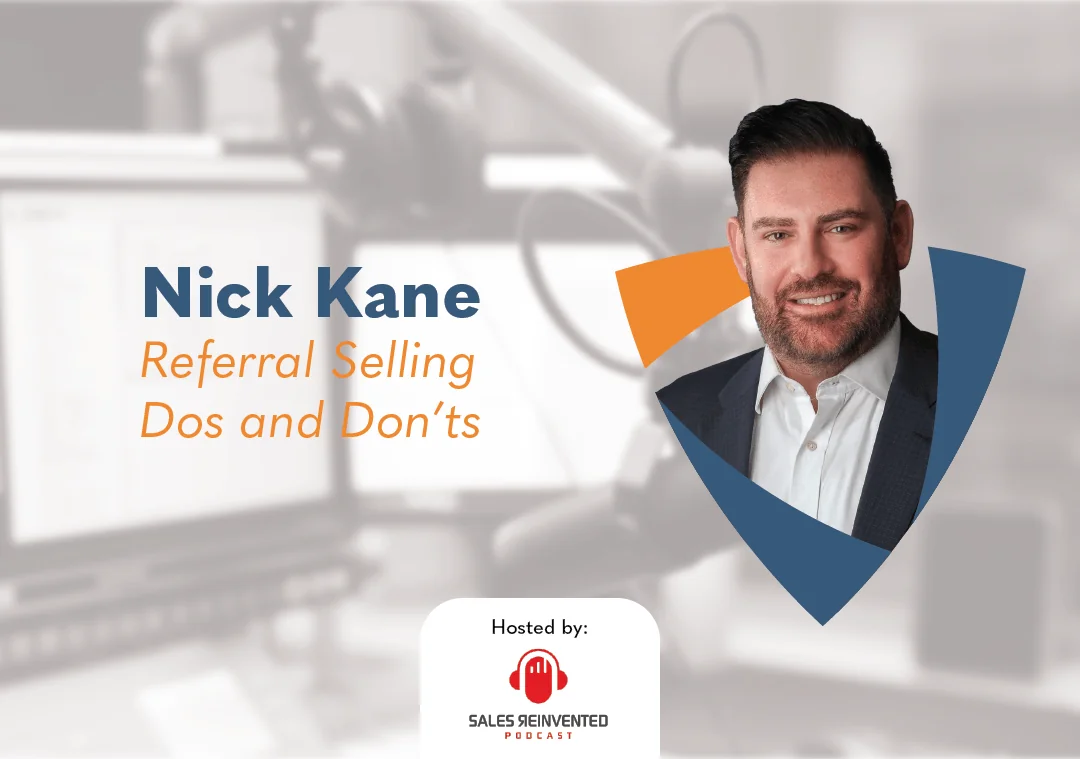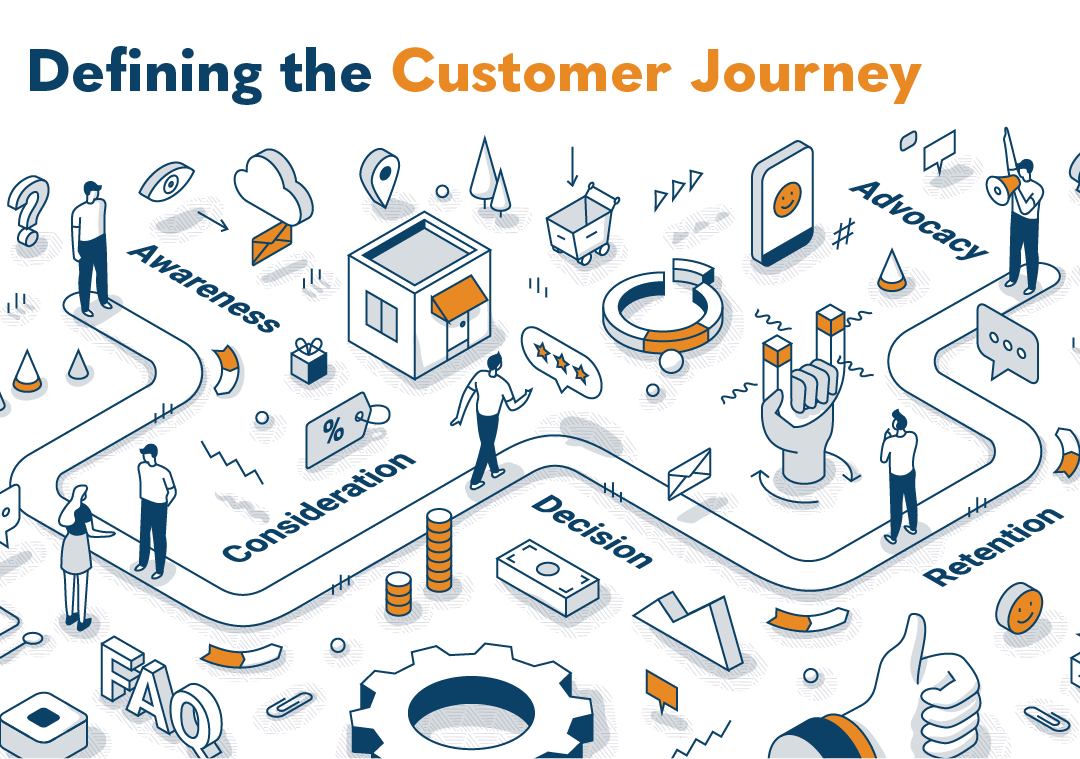Leveraging Referrals to Build Your Network and Grow Your Business

For as long as there have been sales, there have been referrals. Sellers have always relied on word-of- mouth advertising between friends and family. Today, of course, with the internet and social media, there are countless websites for greater reach. Anyone can post positive or negative reviews on sites like Yelp that can affect a business’s bottom line.
However, in B2B selling, referrals are more than positive reviews. They are recommendations from satisfied customers or others in your network or center of influence. In this, they are like a professional endorsement, certification, or accreditation that validate and present opportunity.
With that, seeking and gaining referrals is not as easy as it sounds. Sellers cannot just hope satisfied customers spread the word. And they can’t trust they will tell those who matter most, like potential future customers. Therefore, referrals cannot be left to chance. Instead, there are steps to achieve the best results. Let’s look at how sellers can leverage referrals to boost their networks and grow their business:
Advantages
In sales, proof is gauged by measured and documented success. With referrals, the benefits are clear. For example, annexcloud.com lists the following statistics on referred customers:
- They result in 25 percent higher profit margins
- They are 18 percent more loyal
- They are four times more likely to refer others
- They account for 37 percent higher retention rates
In addition, HubSpot cites the following:
- 56 percent of sales professionals get leads from referrals
- More than 66 percent of sellers say leads generated by referrals are high quality
While the benefits are obvious, how we seek referrals can affect success.
Common Mistakes
Remember, at their most basic level, referrals are one person helping another. When you help a customer, most want to return the favor. Of course, that’s not to say asking is easy—and there’s much that can go wrong. Here are some of the most common mistakes when seeking referrals:
- Wrong time
- Generic request
- Vague value proposition
- Unclear benefits
For some, sales referrals can seem, well, salesy. For fear of being bothersome or presumptions, sellers may hesitate or, worse, rush the process. This makes timing critical. If you ask too soon, you could come across as disingenuous or pushy. Too late and you could miss an opportunity. Time your ask to when your customer is most happy and receptive to recommending you. This could be after they implement your solution and see the results.
Generic requests could net vague or ineffective referrals. Rather than, “I see you have contacts at Walter’s Widgets,” state what you want. For example, “We’ve been trying to get in with your contact, Walter, from Walter’s Widgets. We think our Platinum Package, which was so successful for you, could be equally beneficial. We hope you could tell him about our company and your success, including your 200 percent ROI.”
Sellers may also struggle explaining their value proposition and what’s in it for the customer. Be tactful, and don’t be afraid to show how the referral is mutually beneficial.
Another mistake is not explaining how your referral program works. What specific incentives do you offer, such as discounts or special offers? Think of this as part of the sales process. Help your customer help you.
Social Media
Social media is one of the most effective ways to seek referrals. Look for where their conversations take place, such as LinkedIn. Find those who have already referred others. Inquire if they will share their network. In addition, consider the following:
- Search for groups
- Respond to comments
- Message promptly
- Offer valuable and sharable content
Customers use social media to connect with friends and colleagues with similar interests, demographics, and values. Often, these people congregate in specific groups. You can check these for important connections. See who they know, what they need, how you can help them, and how they can help you.
Customers will often reach out to you on social media. They may share insights, ask questions, or offer thanks. In all, be responsive and message promptly. Don’t wait. You never know who’s watching and liking a post. Perhaps they’re a targeted decision maker and a colleague of that client you just helped.
For social media, create valuable and sharable content. Thought leadership highlights your credentials, builds your brand, and expands your network.
Technology
Today, technology plays a role in seeking referrals. Consider the following tips:
- Leverage applications
- Survey tools
- Track data in your CRM
Seeking referrals can be time consuming. Fortunately, there are applications that can aid this process. These include contact databases, email marketing software, CRMs, customer success software, and social media. Depending on your goals, you can use different platforms for each aspect of your process. These include asking for referrals, sending reminders, offering incentives, and collecting feedback.
Survey tools are great to gauge satisfaction. These can be anonymous or named. But regularly inquire about the customer’s overall experience. This includes your products, your service, and sales professionals.
Your CRM is an important tool to track data, including leading and lagging indicators. You can also use referrals as a lead source. In this, referral leads are “hotter” in that they’re pre-qualified. You already know who they are, where they’re from, and their relative value.
Measure Success
Tracking is key to measuring the success of your referral program. This means collecting data through each stage of the process. From this, you can better gauge what’s working and identify areas that need improvement. Following are important aspects to consider:
- Customer satisfaction
- Key assets
- Number and size of leads generated
- Sales conversions
- Lifetime value
Customer satisfaction is the lifeblood of a referral program. To gain the referrals you need, customers must be happy with your products, service, and experience. Positive answers are a good indicator of success. However, negative or lukewarm responses indicate issues you must address.
Key assets are the people with the most pull or influence, and their satisfaction is paramount. Important people have large networks. And people who know people are the best people to know.
Track the origin of referrals, the number of leads they generate, and the size of the opportunity. Unlike sales leads, referral leads are pre-qualified. You already know they fit your profile, so there is less legwork and greater potential. Also, knowing these things can help gauge the effectiveness of your referral program.
In addition, how many referrals convert to sales? This is an important metric that shows the immediate value of the referral. Of course, referrals that lead to sales are short-term wins. However, referral leads that become trusted partners enhance the lifetime value of the referral. They’re the gift that keeps giving.
Best Practices
- Build strong relationships
- Survey and evaluate
- Segment customers
- Seek strong networks
- Offer a detailed and specific referral program
Building strong relationships is a staple of selling. It is also key to gaining referrals and growing your business. When customers trust you, they are more likely to refer you to others. It is also easier to ask them for the referrals you need.
Silence is not satisfaction. Just because your customer does not complain, you can’t assume they’re happy. Instead, you must regularly survey and evaluate how they feel. And don’t just rely on questionaries. Talk to the customer. If needed, arrange a high-level, one-on-one between executives.
Segment your database to recognize your most loyal and satisfied customers. Who had the best experience? These are the customers most likely to refer you to others. By segmenting your database, you will know who interacts with your customer or contact. You will see where these interactions take place, and you’ll know how to leverage influence from influential people.
In addition, know which people have the strongest networks. This is not just limited to prospects and clients. A network includes other sources, such as suppliers, distributors, channels, and third parties. Be strategic with your referral requests and get creative.
A referral program is too important to leave to chance. Target the right people at the right time and be specific. Tell them what you need. Also, show the specific benefits that make it advantageous. This should include added value and incentives to make their recommendation worthwhile.
Sales and referrals have always gone hand in hand. In that, it can be easy to take them for granted. However, in B2B selling, there’s too much at stake. Sellers cannot simply hope their best customers will share their experiences. For one thing, they may not think of it. For another, they might not know what to say, how to say it, or when. That makes it incumbent on sellers to take the lead. We hope these tips help you leverage referrals to grow your networks and build your business.

- Account Planning (16)
- Awards (42)
- Client Testimonial (37)
- Personal Branding (21)
- Podcast (12)
- Research (77)
- Sales Career Development (90)
- Sales Coaching (165)
- Sales Consulting (141)
- Sales Culture (181)
- Sales Enablement (380)
- Sales Leadership (112)
- Sales Management (268)
- Sales Negotiation (11)
- Sales Prospecting (136)
- Sales Role-Playing (19)
- Sales Training (242)
- Selling Strategies (279)
- Soft Skills (78)
- Talent Management (101)
- Trusted Advisor (29)
- Virtual Selling (57)
- Webinar (13)




























